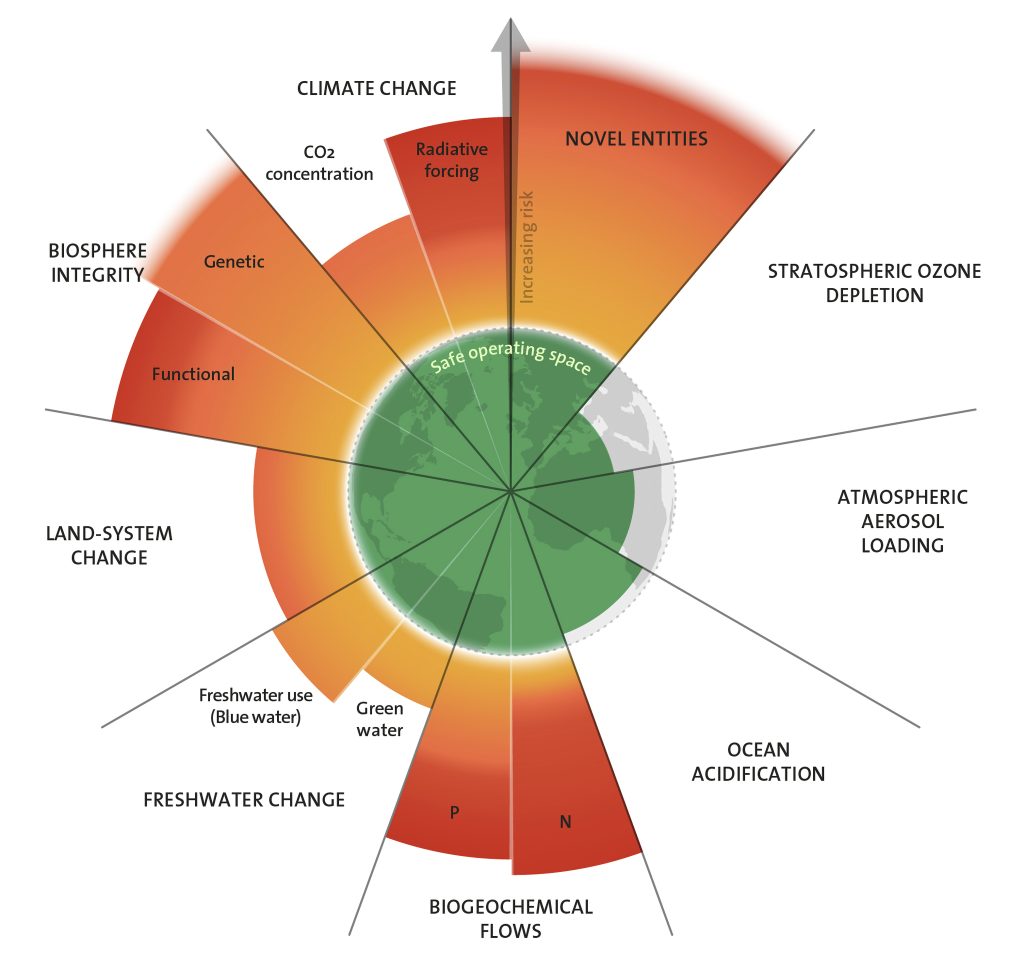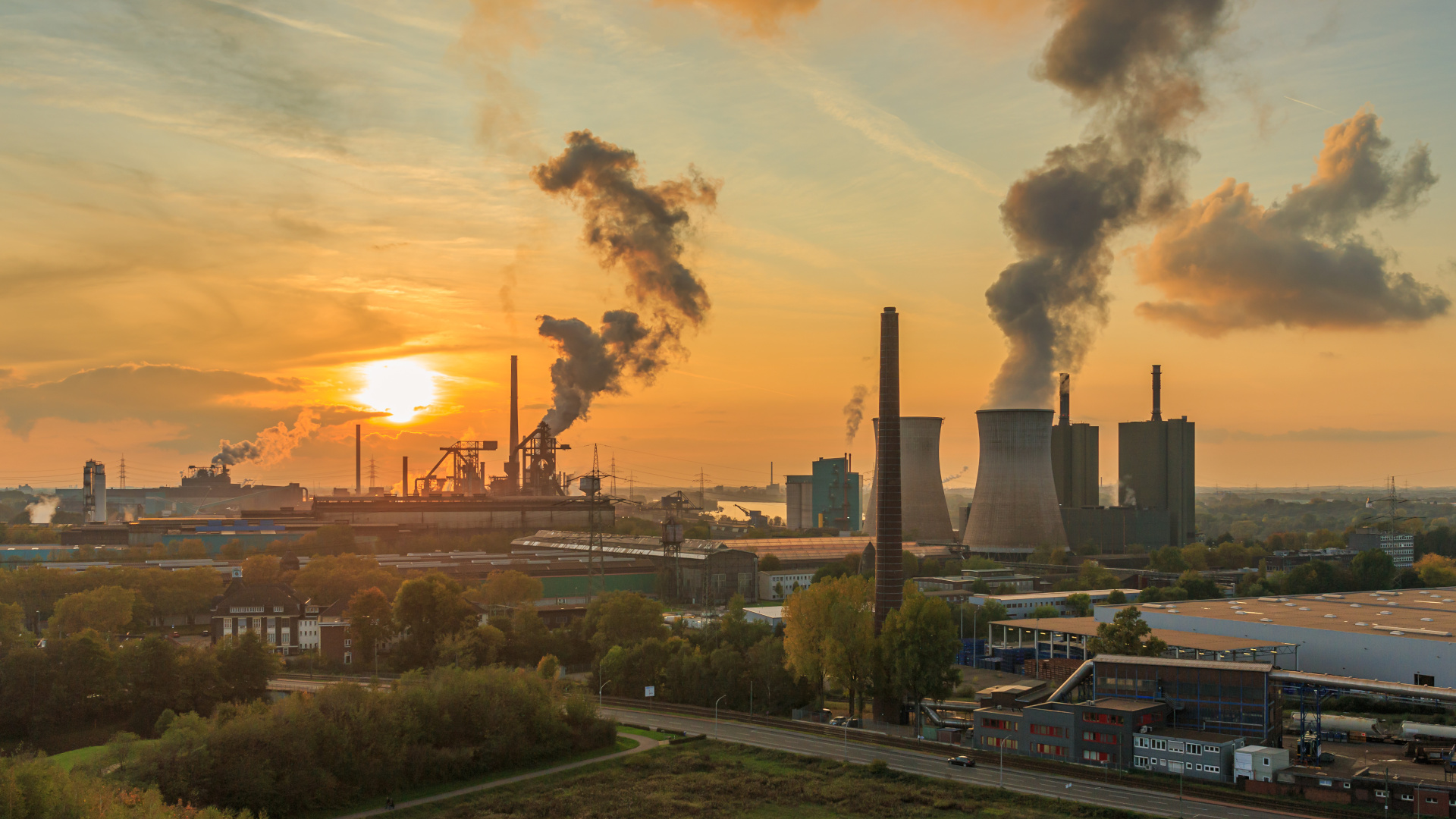Written by: Mo Abbasi
As we navigate the complexities of environmental crises in our time, it is crucial to examine our progress to understand the full scope of the challenge we face. While climate change often dominates headlines, research suggests that our environmental concerns need to extend beyond this singular focus to be able to secure a safe operating space for humanity.
Recent years have seen encouraging progress in global efforts to combat climate change. The rate of increase in carbon emissions has slowed, thanks to the widespread adoption of renewable energy sources and improved energy efficiency. According to the International Energy Agency (IEA), global CO2 emissions grew by 1.1% in 2023, marking a notable deceleration from the 6% increase observed in 2021. This development demonstrates that concerted human efforts can indeed make a tangible impact on our climate trajectory.

Global CO2 emissions from fossil fuels and industry, billion tonnes, 1965-2050 (IEA World Energy Outlooks)
However, results from a long-running research, conducted by an international team of scientists, suggest that the global focus on climate change alone is not sufficient to fully address the environmental crisis. This study reveals that, in addition to climate change, five (out of nine) other “planetary boundaries” are now beyond the safe and sustainable limit for all living beings. These critical boundaries include land system change, freshwater cycle, biogeochemical flows, biosphere integrity, and novel entities (e.g. microplastics and synthetic chemicals).
The planetary boundaries framework, first introduced in 2009, is a vital tool for measuring and indicating various aspects of environmental sustainability. This framework defines nine key Earth System areas that are critically affected by human activity. It also determines the “safe operating space” for each boundary which presents the limit within which we can continue to thrive without risking irreversible damage to the planet’s ecosystem.
This framework’s importance lies in its ability to provide a holistic view of environmental sustainability, highlighting interconnected issues that extend beyond climate change alone. By understanding the multifaceted nature of this challenge, we can work towards a more comprehensive and effective strategy for safeguarding our planet’s future. The challenge ahead is significant, but so is our capacity for innovation and collective action.

The 2023 update to the Planetary boundaries, “Azote for Stockholm Resilience Centre, based on analysis in Richardson et al 2023”
References:
Katherine Richardson et al., Earth beyond six of nine planetary boundaries. Sci. Adv.9, eadh2458(2023). DOI: 10.1126/sciadv.adh2458
Will Steffen et al., Planetary boundaries: Guiding human development on a changing planet. Science 347, 1259855(2015). DOI: 10.1126/science.1259855




